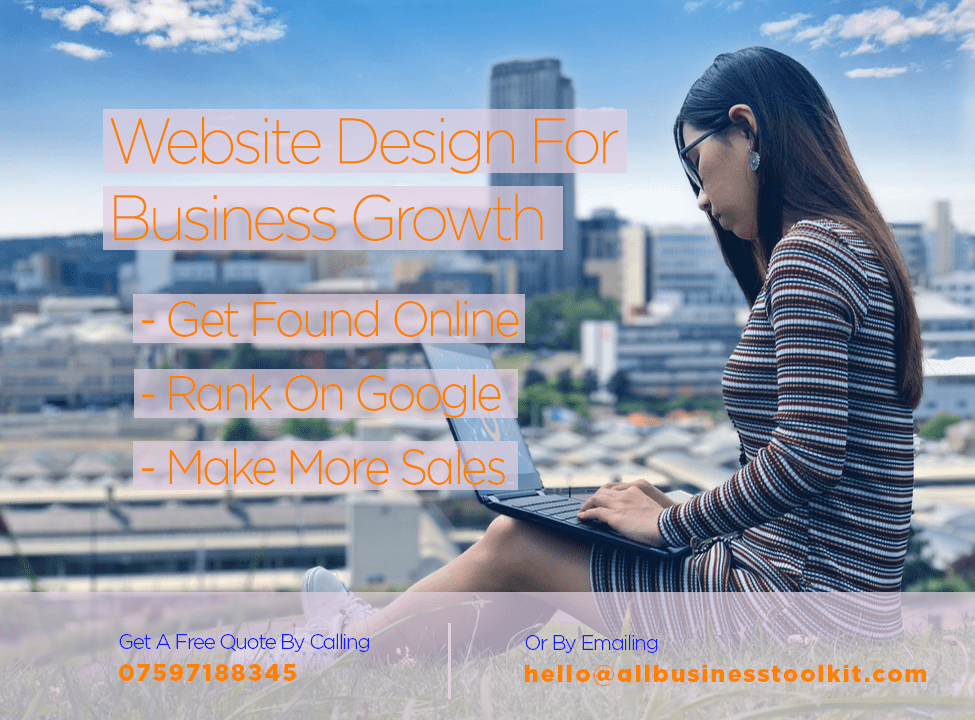You want to deliver the best user experience to your customers, and quite rightly so. It is the #NO 1 concern you should have, as it makes people return to your website and considered a ranking factor for Google. I leveraged user experience when building websites because it is the way to reduce bounce rate.
What is user experience? User experience is a person’s feeling and action when engaging in particular activity. For a user to have a positive experience you want their time spent with you to be as pleasing as possible. This includes considering the rational and emotional value for best meaningful outcome.
In this article, we will discuss more about user experience… In this article, you will see everything it took me to reduce my bounce rate by 50% just by utilising basic principles.
1. What is User Experience?
A person can have both a positive and negative experience with your business. However, when marketers refer to user experience we are speaking about the positive experience. From my experience when working with businesses and in corporations, we often say there is no user experience when referring to those things that provide a bad experience. In addition, there two types of experiences being rational and emotional.
It can be useful to consider our website as a product, and so we ask the question:
What is our target customer’s rational and emotional value?
- Rational value is those physical benefits (for example, iPhone 10 has a 12-megapixel camera)
- Whilst emotional value are things that a person associate with your brand (for example, Apple is luxurious with a status appeal)
There can be some confusion here, as the emotional and rational factors should NOT be treated in isolation. Both emotional and rational factors do interlink (for example, Apple could not be a luxurious brand without having the technical specifications).
2. Why is User Experience Important?
If you have, a high bounce rate for your website will mean you are not providing a necessary user experience. People that provide a better user experience not only understand their customers but also know how to deliver the requirements to meet their customer’s wants and needs.
When optimising websites, user experience is the #No 1 factor Google’s algorithm aims to justify, and Google uses bounce rate as the overarching measure to justify this. By fixing bounce rate, will naturally fix other measures Google uses that are out of our control like pogo sticking and exit rate.
Overall, by delivering a high user experience you will get returning visitors to your website, valued by Google’s search engines for increased traffic in search engines and reach higher levels of growth.
3. Aspects of User Experience
There are many things can contribute to a good experience.
Personalisation
Is the website tailored to your customer group?
Integrity Of Trust
Are you conducting marketing activities consistently with your business mission and are those trustworthy?
Exceeding Customer Expectations
What features can you add to your website that make the customers job easier?
Providing A Resolution To Their Query
Delivering value something away that is helpful, but not too much of a liability.
Minimising Customer Effort (Time and confusion)
Constructing your website that is easier to understand that loads at an acceptable time. 2 seconds loading speed is always a good aim.
Empathy and understanding
If genuinely want to help people you take time to understand a person problem from their perspective.
These Six areas are the building blocks that are applied to every aspect of optimising a website.
4. How to measure User Experience?
When it comes to measuring user experience on a website you can look at the measure given to you in Google Analytics called Bounce rate. Reducing bounce rate, we have to think of those things that are expected with our website and those things we can improve upon making the customer’s journey as easy as possible.
Do you have a high bounce rate, and want to reduce it?
Bounce Rate Reduced By Applying These User Experience Factors

Bounce rate is the KEY measure to assess the overall user experience of a website. The image demonstrates a website I worked on whereby I reduced the bounce rate by 50%, within a 3-month delivery period.
5. White Hat SEO For The Win
Digital marketing is becoming more competitive as more business get online, white hat is the direct link to user experience. There is a common myth amongst less knowledgeable people in the realm of SEO. This myth is by optimising your website fir SEO purposes you fail to deliver what is important for your customers.
Actually, this could not be further from the truth. Google have spent millions of dollars to ensure their search engine deliver the best result to their users, and have made a document that explains what SEO specialists can do to increase the quality of their website to best meet the needs of your customers.
But, in a nut shell your website is a business and so you don’t want to trick your customers. Instead you want to build natural and meaningful relationships.
People don’t get rich by trying to make money, they get rich by trying to solve and help people.
Robert T. Kiyosaki the writer of the famous book “Rich Dad, Poor Dad”
White hat SEO is all about taking the time to deliver the best result to your customers query. White hat is abiding the rules to provide the best UX and thus reach the higher rankings and in theory squeezing out the less relevant information.
White Hat On-site activities include:
- Sitemap
- Good site structure with themes,
- Not siloing
- Good linking practices
- Tailored Metadata to the page topic, have the most
- Relevant content at the top of the page,
- Clear heading describing the body text
- Ensure security by forcing https and SSL across the site
- Markup schema and good tagging practices
White Hat Off-Page Activities Include:
- Naturally building links over time
- Network and build relationships
- Value in content
- Lead with value
Advantages
White hat has the advantages of a long-term strategy because the web application doesn’t get blacklisted. This also has benefits in terms of PPC as Google prioritises better-optimised website, even for paid advertising (Google Garage, 2017). However, it is slower and limited process that can affect the reach to potential users as the strategy can’t use purchased links, link farming and guestbook spamming.
By using the white hat means it would take longer for people to jump on the bandwagon which could involve sharing or going to the latest biggest festival which is profits for the organisation.
However, this is not always a bad thing for a starting business as by a business that boom from the beginning wouldn’t be able to meet the demand and provide to their customers. Their customer service would not be to standard, the organisation would need a rapid change to cope with the increasingly rapid demand (Forbes a, 2017). For e-commerce stores in particularly could build a bad reputation from the start and the user-generated content would be negative which could later affect profits in the business.
6. Black Hat SEO
Blackhat approach to SEO means optimising web applications that don’t follow Google guidelines, and there are two main approaches are on-page SEO and off-page SEO. Black SEO is a technique used to try to bypass the terms Google set to deliver quick rankings in the search results. The advantages of this are that your website will receive massive amounts of traffic at a much faster rate.
However, any marketer that tries to boost a website this way will deliver a bad user experience (or as marketers say “no user experience”), as there is no value being delivered to the visitor. You do not want to build a website this way, as it is a spammy site. As well as when Google finds out then will un-index you from the search engine.
It may be noted that applying any black hat strategies are strict violation of Google’s webmaster terms. If such websites are found the domain name may be marked as spam may even be terminated from the search engine and other Google’s accounts so use at your own risk.
This is because Google operate in a competitive space and they want to beat their rivals such as, Yahoo and Bing search engines. To do this they aim to deliver the beat search results to their user’s queries.
Well known onpage black hat techniques include:
- These include cloaking,
- doorway pages, and
- invisible elements. Making the font so small using CSS / JS such that the font becomes invisible
- Making the font colour and background colour exactly match each other
- using CSS to set text display to none
- Setting the font colour to transparent using CSS
- Setting the visibility attribute of font to invisible
The black hat on-page is focusing on providing content only bots can see and shows different content to the users.
Well known onpage black hat techniques include:
- link farming,
- guestbook spamming and
- buying links and social shares
The black hat off-page is getting as many backlinks to the web page.
Google states in their 200-page document guide that user experience is the biggest ranking factor and black hats do not deliver quality for Google’s users.
Google is not able to stop ranking these websites, as it will affect the quality of the overall search results. As a result, they have put mechanism in place to detect these activities. They will then review them and un-index if necessary.
Based on Chaffey and Ellis-Chadwick (2016) Black Hat uses a rinse and repeat process of gaining revenue through SEO. This includes setting up a web page, get it black hat optimised where it will make a profit immediately until Google ban the site and then the process repeats.
Black hat is being more problematic in other ways as Google are holding more credibility than younger sites (Google Support, 2017). This, in theory, means the rinse and repeat method of black hat becomes harder to achieve and makes it harder for a genuine website that is new to the platform to get established.
7. Be Relevant
Google’s philosophy is to create advantageous user experience by delivering the most accurate web pages to their users. What is a niche? A niche is basically a segment of an industry. For example, Pepsi sell fizzy drinks but their target audience are sports people between the ages of 15 – 25. If Pepsi wanted to be more niche then they could further fine-tune their target market by aiming their gender, occupation etc.…
To target a niche the right way, you target a niche the relevant way.
Relevance means that the information on your web page meets the needs of the user. This means you need to understand the customer, their problems, and address these concerns in a way your customer can understand (be customer orientated). Google is able to filter out bad websites (that are not relevant), in three ways. With bounce rate being the main measure, Google also use Pogo sticking and exit rate.
This means your web page has to match up to the Meta titles and descriptors, and if you have a click bait title then you better live up to that promise in the referring page. The reason niche websites do well and standout (over more general websites) is because the products they sell and the content they provide is very specific to a person’s needs. By targeting a niche and being relevant mainly comes down to research and planning.
8. Build a Niche Brand
Another reason for a high bounce rate is something I call customer confusion. I see this happen all the time and I experience this every day. I always experience customer confusion when first time entered a website (either by referrals or in the search engine results page).
This is because when you enter a website for the first time you have questions…
…What is this website about?
…What are they selling?
…Why are they giving way free information?
…Can I trust this information?
If you do not get answers to these questions then you will remain confused. If someone new has just spent the time and energy coming to your website, they will usually want to get to know you. If they are curious and have questions that need answering, they will often bounce around your website until they get these answers.
If a visitor do not find the answer they are looking for they will leave, and instantly forget who you are. No relationship has been built, and no first impression is made. The way to get these answers to your user earlier on is in your brand.
Furthermore, Google is taking brand signals more and more seriously. In addition, you want to answer the consumer’s questions and do not give them chance to make assumptions about your business, as assumptions are often wrong.
9. Make it easy for Google bots
Since Google’s introduced Penguin (algorithm update), it has significantly altered how marketers approach SEO. Since this update Google is able to better understand the quality of your website. It can identify if people are trying to spam and cheat the system. Overall, they can deliver more relevant information to their users.
But, as technical as Google is, they are not perfect and the amount of information is only increasing. Everyday new websites increased the amount of information that Google has to filter. With the increasing mass of data means the power of Google must be maintained to sift through the noise, bringing most relevant SERP is to better serve its users.
Spend more time optimising your website and webpage than building backlinks.
10. Consistent, Well Optimised Website
Yes! Google values a well-optimised website. This means less than a 3-second loading speed, mobile optimised, secured and have a sitemap so Google can find all of your pages. However, these things are just scratching the surface, and they are expected. When optimising your website consistency is the KEY.
To be user friendly have each page structured the same, and have the page structure consistent with other websites in your online space.
Remember that thing called customer confusion (mentioned above)? Well, if menu items are in disarray and you have a site structure that hasn’t been seen before can actually be confusing for a new person. Just think how much brainpower a person uses when they access my site. How hard is it to find my information? A person uses less brainpower when they are familiar with the structure. So, you have to assume the visitor will know where to find all your information before they have even entered the site.
11. A/B Test New Ideas in Moderation
A/B testing is essentially BETA test a new product. It is something you do when you want to revolutionise the industry but be sure it is a revolution useful to your target customers.
Apple is an example of an organisation that is forced to revolutionise and before they release a new product or software update, they run BETA tests to a smaller and controlled group of people.
When you are A/B testing you are testing through implementation and so the things you aims to test have to be in control.
12. Lead With Value
Leading with value is a technique that is killer to build brand loyalty. It includes reaching out to someone (be it email, social or even on the streets), and giving them something in exchange for them visiting your website. The clever way to do this is giving away something you can replicate at low cost.
It can be a how to guide or access to some basic features for free. This can be described more clearly as the focus in providing quality to the users and is the interaction before users commit to the desired action. Which by adding value to their life and passing them through your sales funnel? Nevertheless, more importantly, it goes deeper as by offering value to someone life they will be more inclined to engage with your website. The physiological elements are that they will subconsciously they feel they are in debt to that organisation.
In return, will have users more likely to voluntarily share your links with friends (if they have received the desired value) to pay off their subconscious dept.





